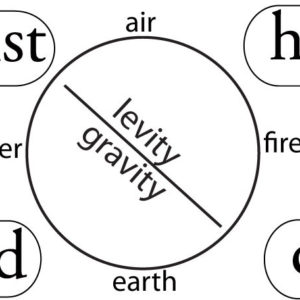Elements, Temperaments and Humors – Part 4
By Dennis Klocek 9 min read
See our video series on Temperaments and Health here.

In alchemy the levity/ gravity polarity is known as the sun and moon. The levity side of an alchemical mandala is linked to the force of the sun. The solar force is Avicenna’s principle of innate heat. It is also the principle behind Rudolf Steiner connecting the solar action of the “I” or True Self to the warmth of the blood. The heart is the solar organ opening the door for the blood to instill universal life potentials to cellular metabolism. This works through the oil soluble secretions in the blood. The solar force is tempered in the body by the cool and moist gravity spawned lunar forces.
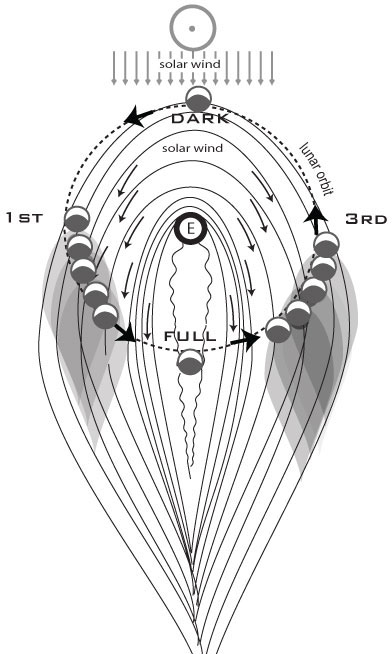
The temperamental representative of the gravity side of the mandala is the moon. The diagram shows the moon disturbing the earth’s magneto-tail that flows out into space in the lee of the earth. The magnetic field of the earth is stretched out in the lee of a current of light known as the solar wind.
At the dark moon no stream lines in the solar wind are cut. But between the first and the full and then running out to the third quarter, the moon cuts through magneto-tall streamlines. This disturbs Earth’s atmosphere near full moon resulting in statistically proven rains. All things watery and salty are lunar. The actions of the lymph and other secretions in the body are lunar. Salts and acids being water soluble are polar to oils that are not. The moon gives structure and substance. The sun gives function and dynamic. The play of sun and moon between each organ is the temperamental dialogue. This pattern is the guiding force of the embryo.
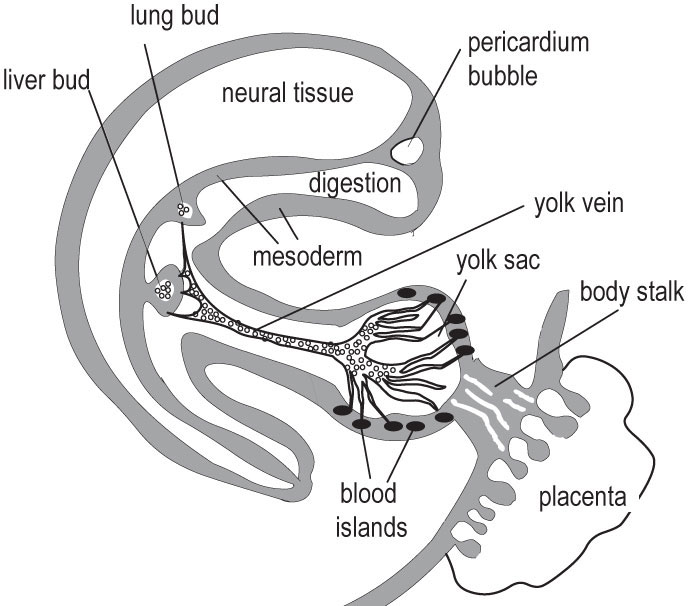
The development of the human embryo can provide a way to understand the link between sun and moon in human development. The heart is the first organ to appear in the embryonic disc. It starts as a bubble in the tissues outside of the head and journeys down into the body through the future mouth. At the same time below in the digestive area blood islands form streams into the embryo from the yolk sac. They meet in the middle. The heart seeks moistness from the body to temper the fire of its cosmic origin. That ardor of intent represents the key soul mood of a choleric temperament.
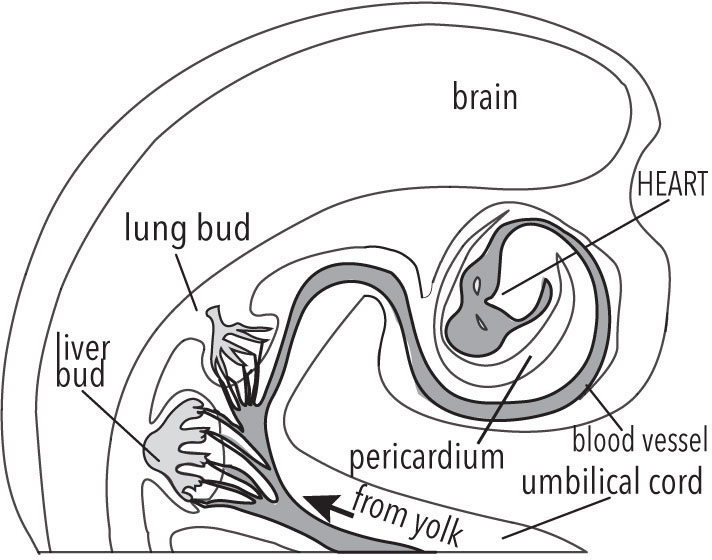
The blood spontaneously forms in the yolk sac, streams through the umbilical to the site of the future liver. There it fills the embryo with sponge like blood tissue that forms a liver bud. The liver bud receives the blood from outside and works to convert its nutrients into body agreeable sustenance as phlegm or “cold” blood. “Cold” means alive but not universally metabolized. The focus on providing sustenance is the basis of a phlegmatic temperament.
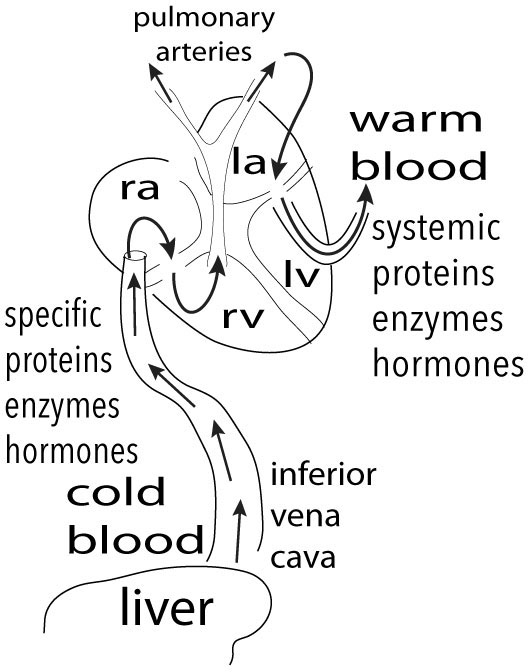
The “cold” blood passes from the liver through the heart to the lung and back to the heart where it is warmed and sent out to the body. The embryonic evolution of the lung is a bud formation similar to the liver. The lung secretes specific protein antigens against outer threats and its outflow remains on the “cold” side of the blood along with the liver. The warmed blood from the heart promotes universal cellular metabolism.
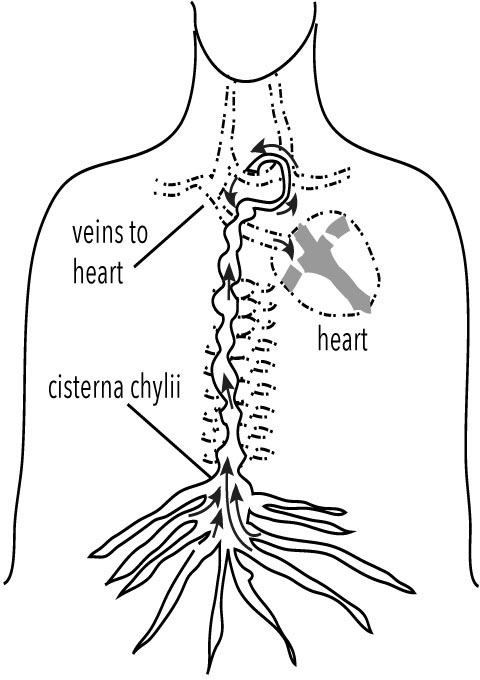
A strong flow of phlegm goes into the heart from the cisterna chylii, a gathering of intestinal and capillary lymph in the abdomen. This lymph joins the venous blood return that enters the heart just above the right atrium. At that point the solution has not only “cold” or spent lymph and blood but also a warming oily lymph known as chyle. The chyle is Avicenna’s “yellow bile” made by the spleen, pancreas, liver and gall system.
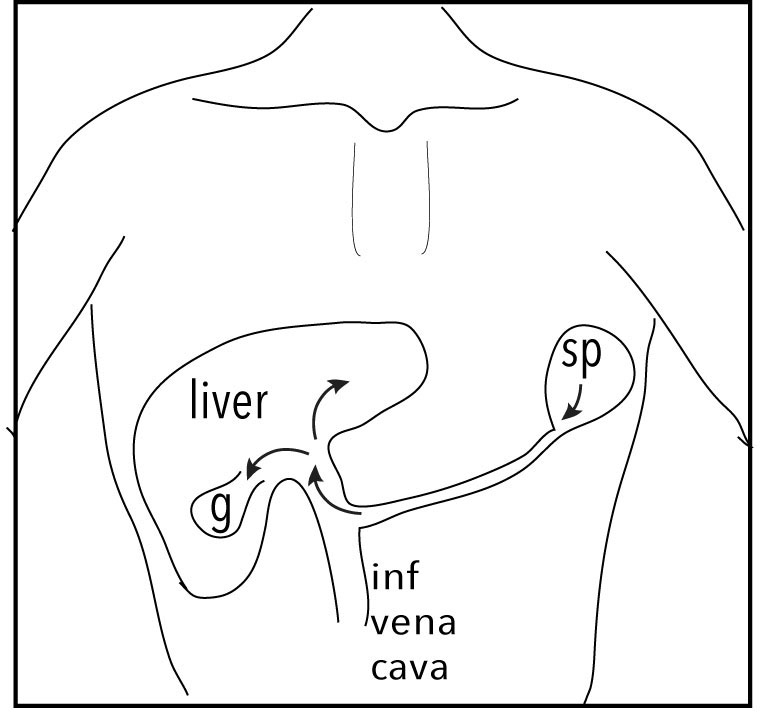
Fats that are consumed pass through the stomach untouched and must be emulsified to be available for cellular nutrition. The spleen secretes substances from spent blood cells that are directed into the liver by way of the inferior vena cava and the portal vein. These substances can emulsify fats and are stored in the gall bladder.
The phlegm, known as chyme, made of water soluble proteins and carbohydrates is met just below the stomach opening with these emulsifiers from the store in the gall bladder. The bile along with pancreatic enzyme secretions is injected into the stomach phlegm to emulsify fats. The liquid fats (essential fatty acids) are quickly absorbed from the intestine and sent directly to the heart to mix with all other blood / lymph inflow.
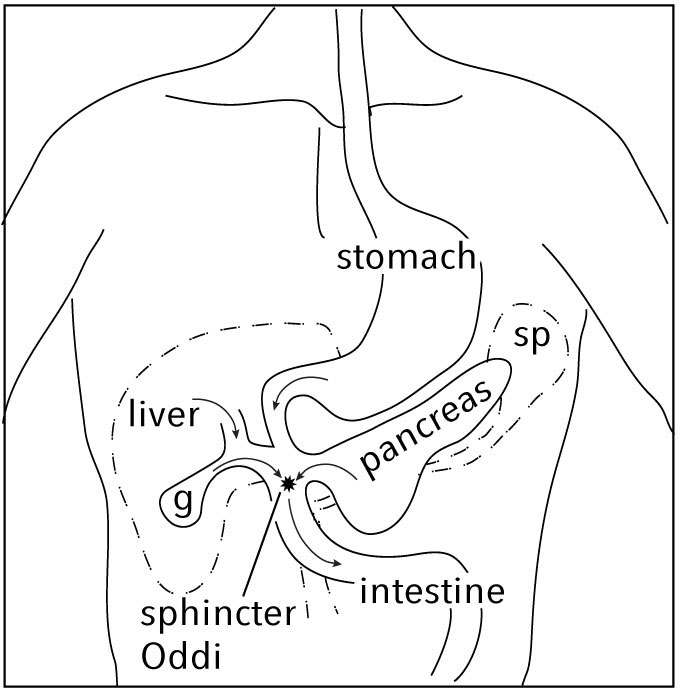
A small sphincter found by the anatomist Oddi in 1887 is the common outlet of the bile salts and pancreatic enzymes. Dispersed into the water soluble phlegm that contains undigested fats the “yellow bile” of the fresh bile emulsifiers disperses the fats. The heart circulates this energy source to all the cells through the blood. When tempered, this warming solution of soluble oils and salts allows the True Spiritual Human to live in the warmth of the blood that permeates every cell. Spent salts, acids and carbonates in these solutions that can’t be recycled are filtered out by the drying action of the kidneys and excreted. Avicenna called them black bile.
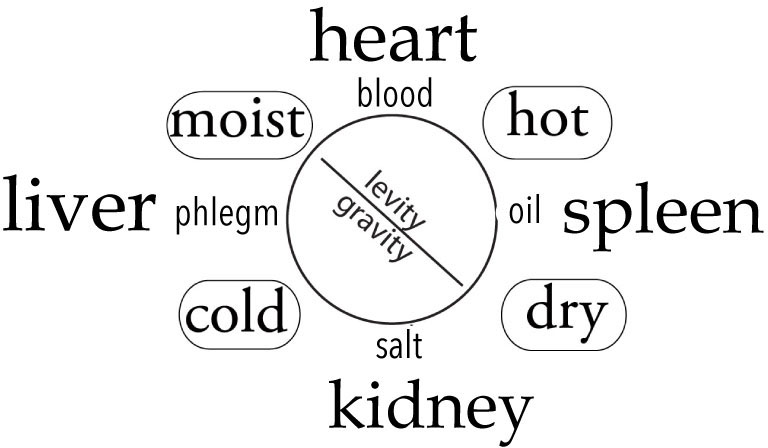
This mandala shows the temperaments and humors linked to the organs that regulate the activities of innate heat potentials in the blood. Innate heat is the field of activity of the human spirit in deep connection with cellular metabolism. What Avicenna calls innate heat Rudolf Steiner calls living warmth. The life organs use the perception of living warmth and dead warmth (physical temperature) to monitor the conditions of the blood.
Between cold and moist the phlegmatic liver tempers dead minerals into cell salts (phosphates, carbonates, sulfates) capable of supporting cellular nutrition. Lifting dead substance into life is the liver outlook. The phlegm that results is tempered again by the heart/ lung rhythms to blend the moist and hot temperaments that produce the blood contents and plasma. This makes them available for cellular transport. The enlivened blood contains emulsified fats produced by the spleen/ pancreas/gall system.
The oil content of the blood resists water and is a combination of the hot and dry temperaments that produce Avicenna’s yellow bile or we would say essential fatty acid content of the blood. The drying influence of the oils interacting with the phospholipid (salt/fat) content of all membranes causes cold salt to fall out of solution while living salts are recycled back into the general circulation of lymph and blood. The separation and purification of salt is the realm of the kidneys.
The salts that fall out are the black bile of Avicenna and the salts that are recycled are used by the liver to begin the production of renewing nutritious phlegm. Liver, heart and lung, spleen and pancreas and kidneys represent the temperamental signatures that form a cycle of relationships at all levels of cellular nutrition. The movements between fixed elements and highly volatile humors is carried out by the mutable temperaments. This system is very ancient and very useful today.
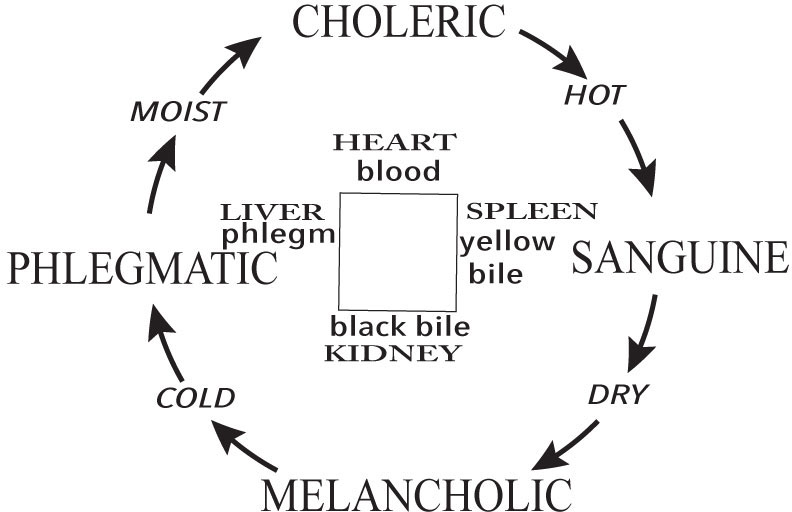
The temperamental positions on the mandala can also give an often revealing portrait of a person whose soul force is dominated by strong signals from one of the organs. This throws the others out and requires tempering the temperamental mood of the out of balance organ. For instance, a liver dominated phlegmatic prefers moist, creamy and cold foods eaten slowly. In this temperament the cold and moist foods fulfill the dominating soul preference.
The choleric temperament in the blood pole is helped by moisture that tempers the heat. These people love to take something with youth and moistness and cook it up into something special. If the hot side of the temperament moves towards dryness the choleric is beset with all forms of blockages as too much heat dries out the blood and burns out the beneficial salts that form deposits.

The sanguine temperament also is very intimate with the blood, as its name suggests. The sanguine temperament in the soul results from listening to the melodies played by the trio of spleen, pancreas and liver. The potential for cells to metabolize what is in the blood is inscribed into the blood by secretions from these organs. The health or illness producing balances in blood and lymph are in constant flux. Hyper vigilance for potential change is the key temperamental soul quality of souls tuned into this level of exchange.

The melancholic temperament finds support when salt or acid deposits in the blood become too numerous. A certain amount of mineral ash becomes bones and nerve tissue but much ash needs to be passed out of the body. The kidneys are conscious of any excesses that resulted in the ash debris in the blood. That black bile ash must be eliminated. This makes the kidneys the gravitas gatekeepers between what remains within the human and what cannot remain. Their focus is the difference between potential bile salts and spent bile salts in the blood. The focus on past events and the tallying up of the results is a key melancholic outlook.
Alchemically there are many ways to assign a temperamental disposition to a specific organ. This is just one way of looking. The focus of an organ on the warm or cold, living or spent condition of the blood is the basis for these descriptions. The temperaments in the human are both the action of the organs towards the blood and the reaction of the human towards those organ reactions. We could say that temperament arises when the human spirit gazes into the blood looking for the living flame that is its True Eternal Self.

Dennis Klocek
Dennis Klocek, MFA, is co-founder of the Coros Institute, an internationally renowned lecturer, and teacher. He is the author of nine books, including the newly released Colors of the Soul; Esoteric Physiology and also Sacred Agriculture: The Alchemy of Biodynamics. He regularly shares his alchemical, spiritual, and scientific insights at soilsoulandspirit.com.
Similar Writings
Elements, Temperaments and Humors – Part 1
Traditional medicine makes use of the principle of tempering. Tempering is the incremental application of small changes that gradually establish order through proportional balance. This is achieved by repeated actions applied in small incremental steps. Among plant medicines, potent herbs known as adaptogens (spikenard, ginseng, eleuthero, rhodiola) are valued for their tempering forces. In music,…
Why use oils on the body
Since the most ancient times, the application of fragrant oils to the body has provided a special and harmonizing experience. From the language of anointing in the ancient texts to the current research in essential oils the recognition that a unique dimension is offered to humans in the application of fragrant oils to different areas…
